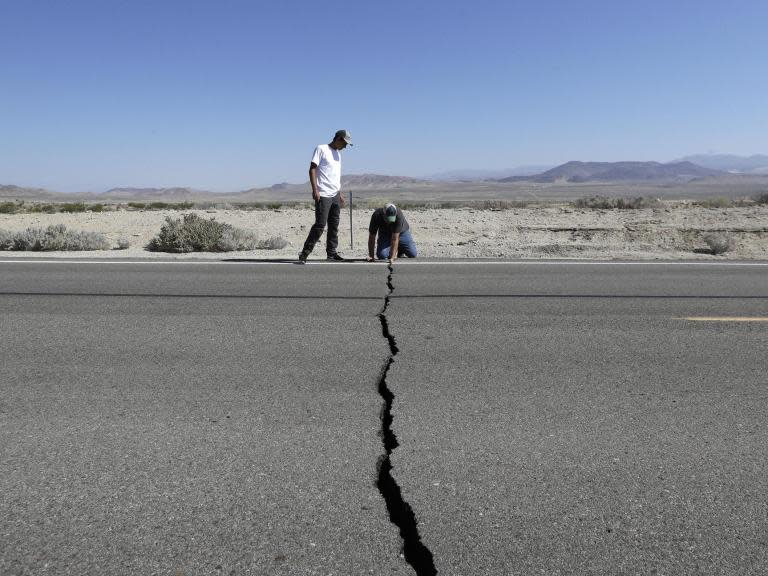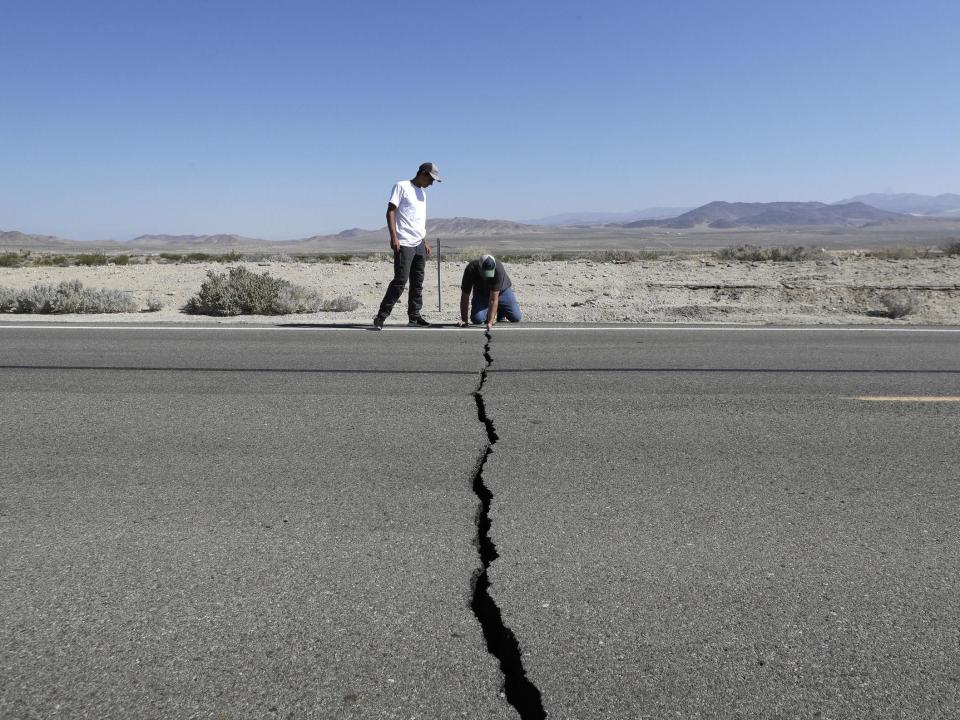California earthquake: more major quakes and months of aftershocks likely, seismologists say
Up to 30,000 aftershocks could hit California in the next six months after the US state was hit by two major earthquakes in 48 hours last week, seismologists have warned.
They were part of a continuing sequence of tremors that would affect the area for months, said Lucy Jones, of the California Institute of Technology and said the earthquakes.
The region could see more than 30,000 minor earthquakes over six months, with one or two magnitude 6 quakes expected, her colleague and fellow seismologist Egill Hauksson, added.
Up to 190 magnitude 3 earthquakes could take place over the next week alone, with a 12 per cent probability of a magnitude 6 earthquake, according to the US Geological Survey (USGS).
Magnitude 3 earthquakes are big enough to be felt and any earthquake over magnitude 4 is big enough to cause damage to buildings.
“It is a wake-up call for the rest of the state and other parts of the nation, frankly,” California Governor Gavin Newsom said, voicing concerns about the possibility of major aftershocks in the months to come.
He said that residents should make sure they know how to respond if more natural disasters strike.
Friday’s evening's earthquake was the largest one Southern California in nearly 20 years. Centred 11 miles from Ridgecrest, a small town with around 28,000 residents it struck the same area of the desert where a 6.4-magnitude temblor hit on Thursday
The earthquake was felt by millions across an area ranging from Sacramento, the state capital in the north, to Mexico and including the Las Vegas and Los Angeles counties.
It came off the back of hundreds of “foreshocks” that rattled the region late last month.
Those left behind cracked and burning buildings, broken roads, obstructed railroad tracks and leaking water and gas lines and prompted the evacuation of the US Navy’s largest single landholding, the Naval Air Weapons Station China Lake in the Mohave Desert.
Only a few injuries were reported, but two houses were reported to have caught fire from broken gas pipes; water gushed from zigzagged cracks in the busted pavement; and deep fissures were seen snaking across the Mojave Desert.
In Ridgecrest, local fire and police officials said they were initially swamped by calls for medical and ambulance service.
But police Chief Jed McLaughlin said there was “nothing but minor injuries such as cuts and bruises, by the grace of God.”
In Trona, a town of about 2,000 people considered the gateway to Death Valley, fire officials said up to 50 structures were damaged. San Bernardino County Supervisor Robert Lovingood said the US Federal Emergency Management Agency (FEMA) delivered a tractor-trailer full of bottled water because of damage to water lines. Newsom declared a state of emergency for the county.
The USGS has issued a red alert for economic losses, meaning that extensive damage is probable and that the disaster is likely widespread. Estimated economic losses are at least $1 billion dollars.
“Past events with this alert level have required a national or international level response,” the USGS said in its assessment.
Mr Newsom estimated more than $100m (£79m) in economic damages and said President Donald Trump called him to offer federal support in the rebuilding effort.
“He’s committed in the long haul, the long run, to help support the rebuilding efforts,” Mr Newsom, a Democrat, said of his leader.
“There’s no question we don’t agree on everything, but one area where there’s no politics, where we work extremely well together, is our response to emergencies,” he added.
The USGS said the aftershock activity is decreasing faster than average. Aftershocks are minor earthquakes that take place as the displaced crust adjusts to the effects of the main earthquake. It is normal for aftershocks to take place for weeks after a major shock, although their number decreases over time. A large aftershock can temporarily increase the numbers again.
With aftershocks expected and temperatures forecast to reach 38 Celsius over the next several days, officials were taking precautions.
The California National Guard sent 200 troops, logistical support and aircraft. Major General David Baldwin said the Pentagon had been notified and the entire California Military Department was put on alert.
The California Office of Emergency Services also brought in cots, water and meals and set up cooling centres in the region.
Additional reporting by Associated Press


